Abstract
Five strains of gram-negative, yellow chromogenic bacilli were recovered from clinical specimens which fit the characteristics of the “lathyri-herbicola group” within the genus Erwinia. The strains were facultatively anaerobic, fermentative, anaerogenic bacilli with peritrichous flagella which grew at 37 C, reduced nitrate to nitrite, and failed to produce oxidase, pectinase, arginine dihydrolase, and decarboxylases for lysine and ornithine. Aggregations of bacteria (symplasmata) were observed in the syneresis water of slant cultures, and analogous granular aggregates and biconvex, spindle-shaped bodies developed in colonies on plate cultures. Awareness of these characteristics should result in more frequent identification of Erwinia species from human sources.
Full text
PDF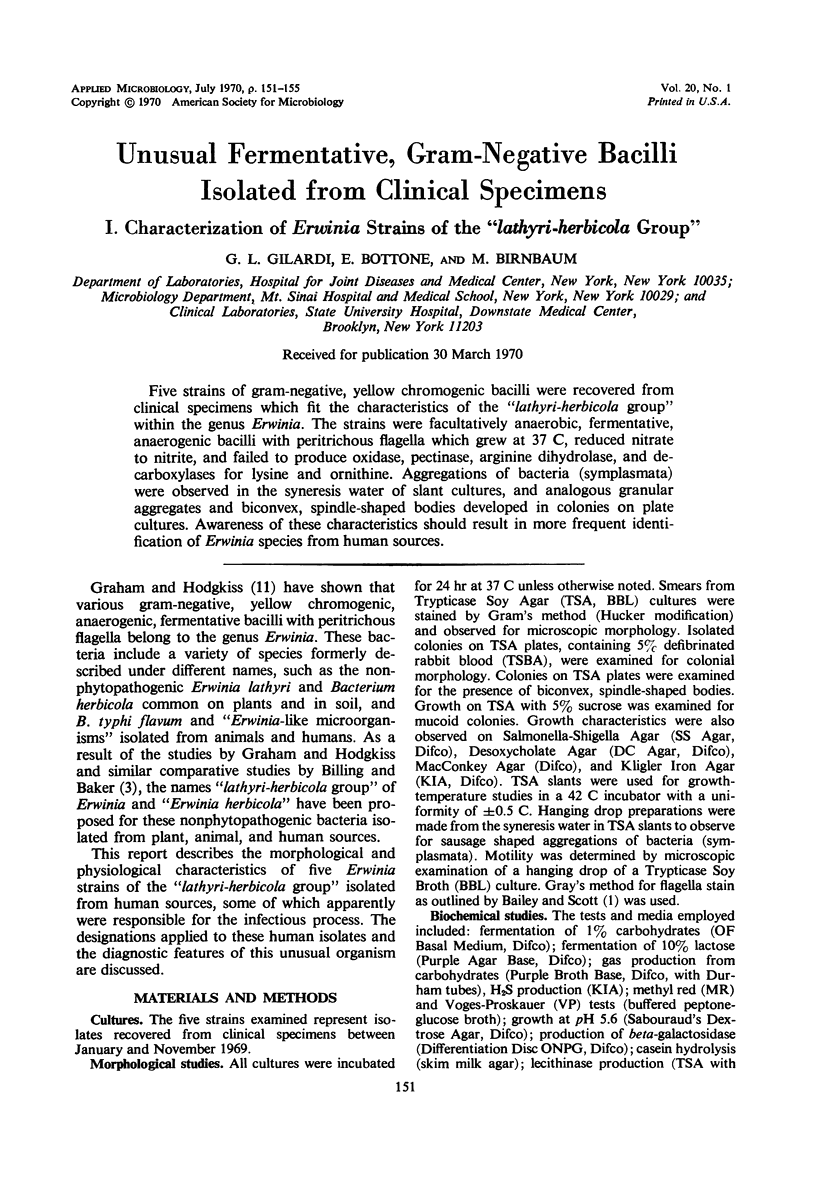
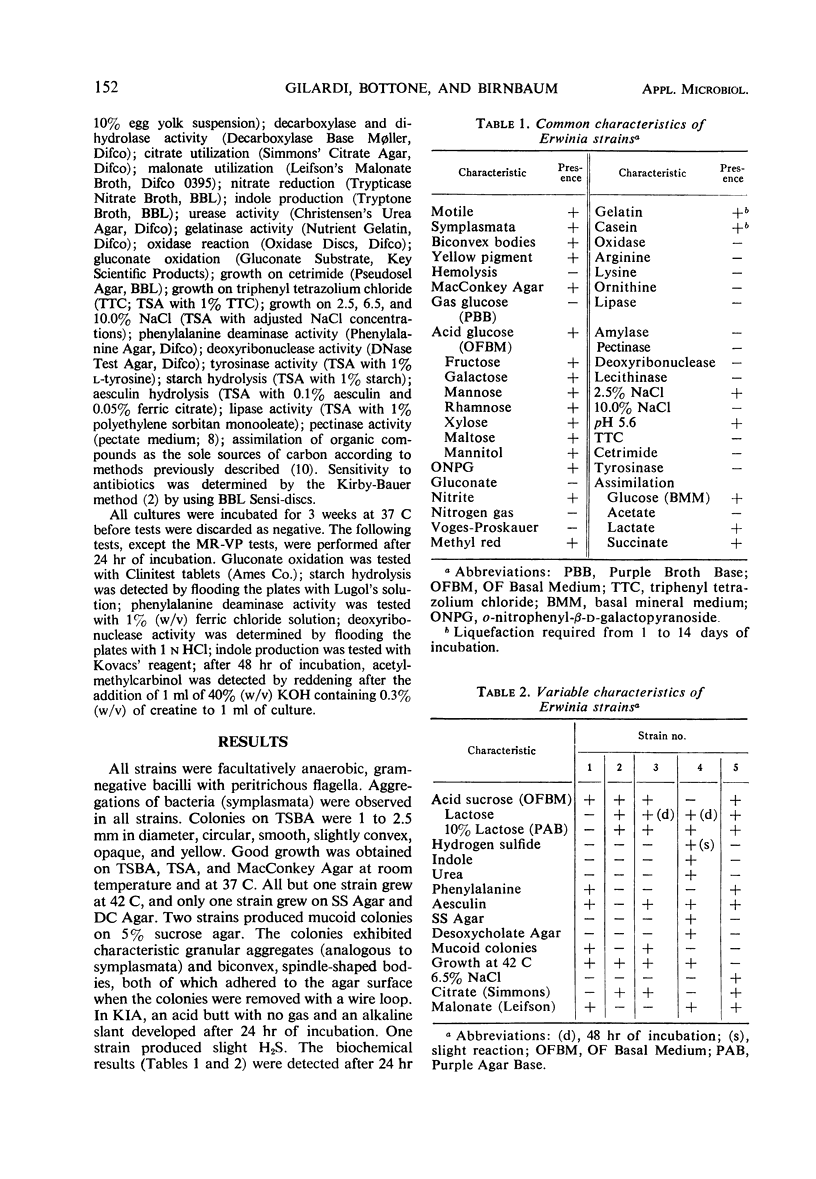
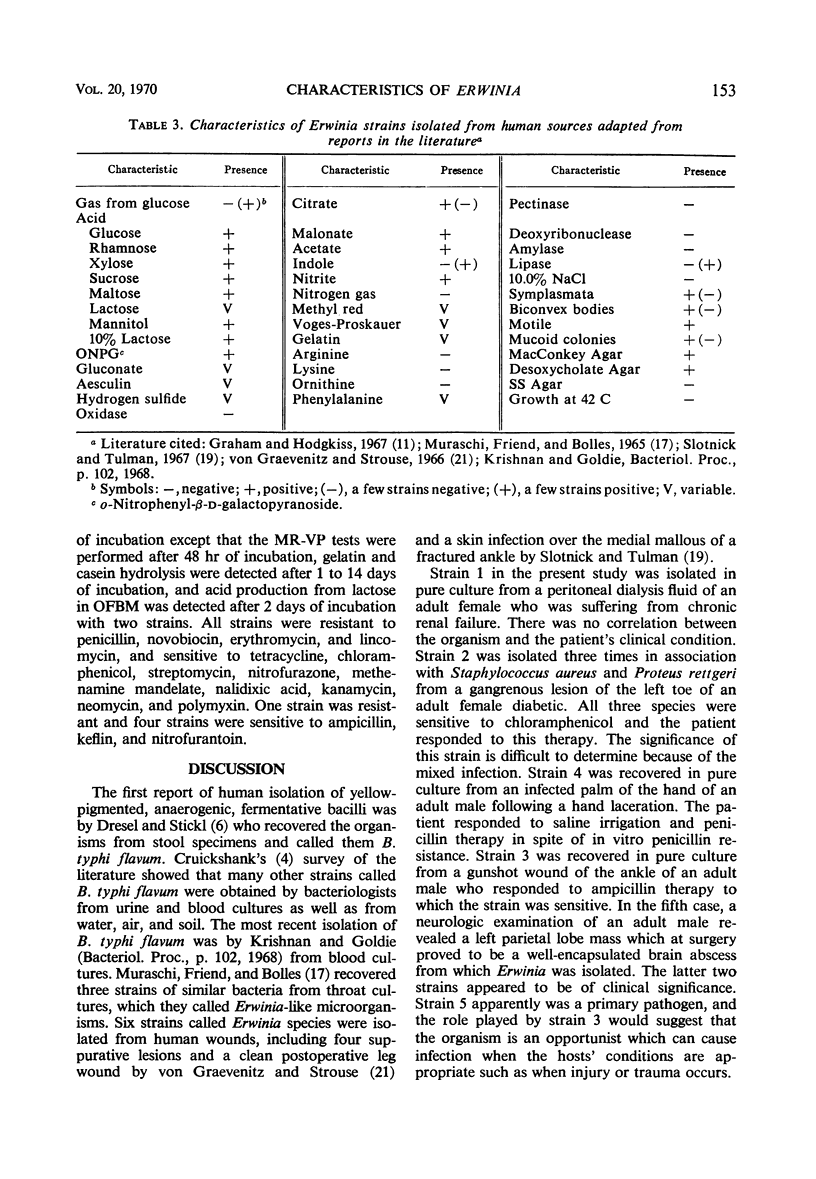
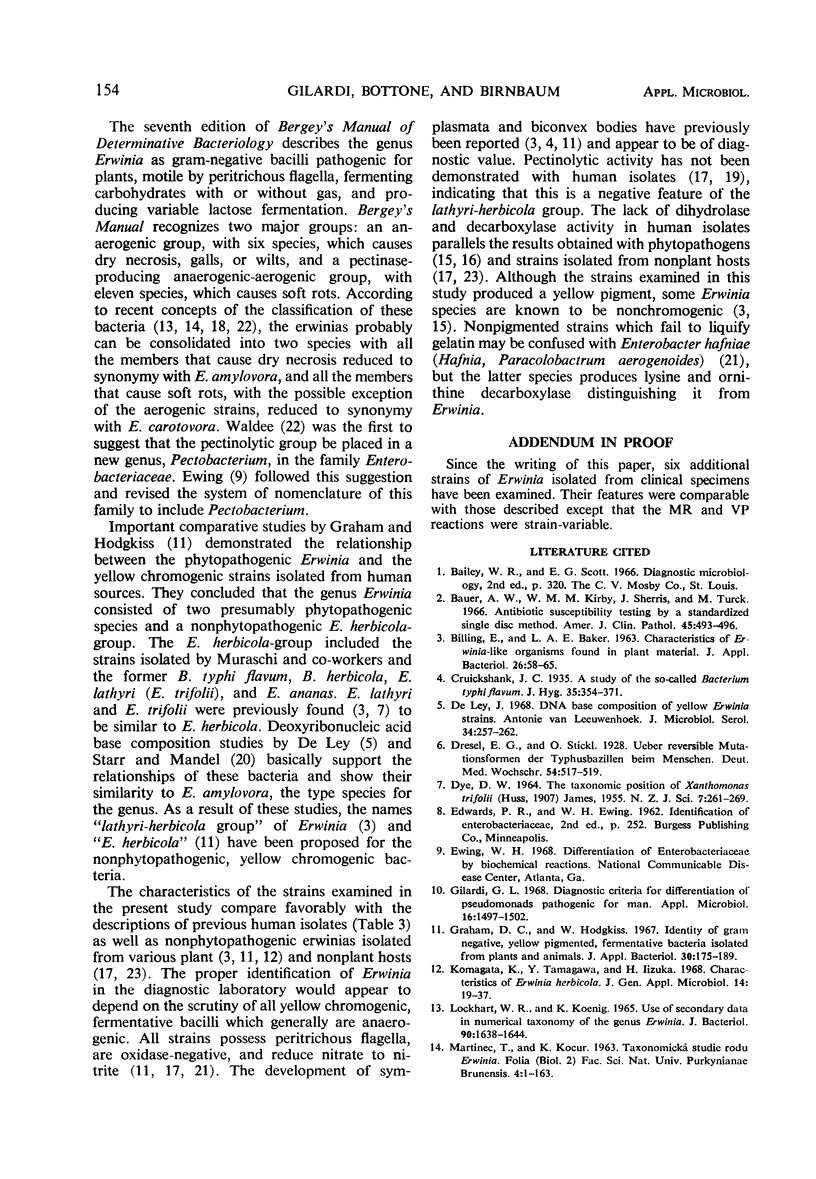
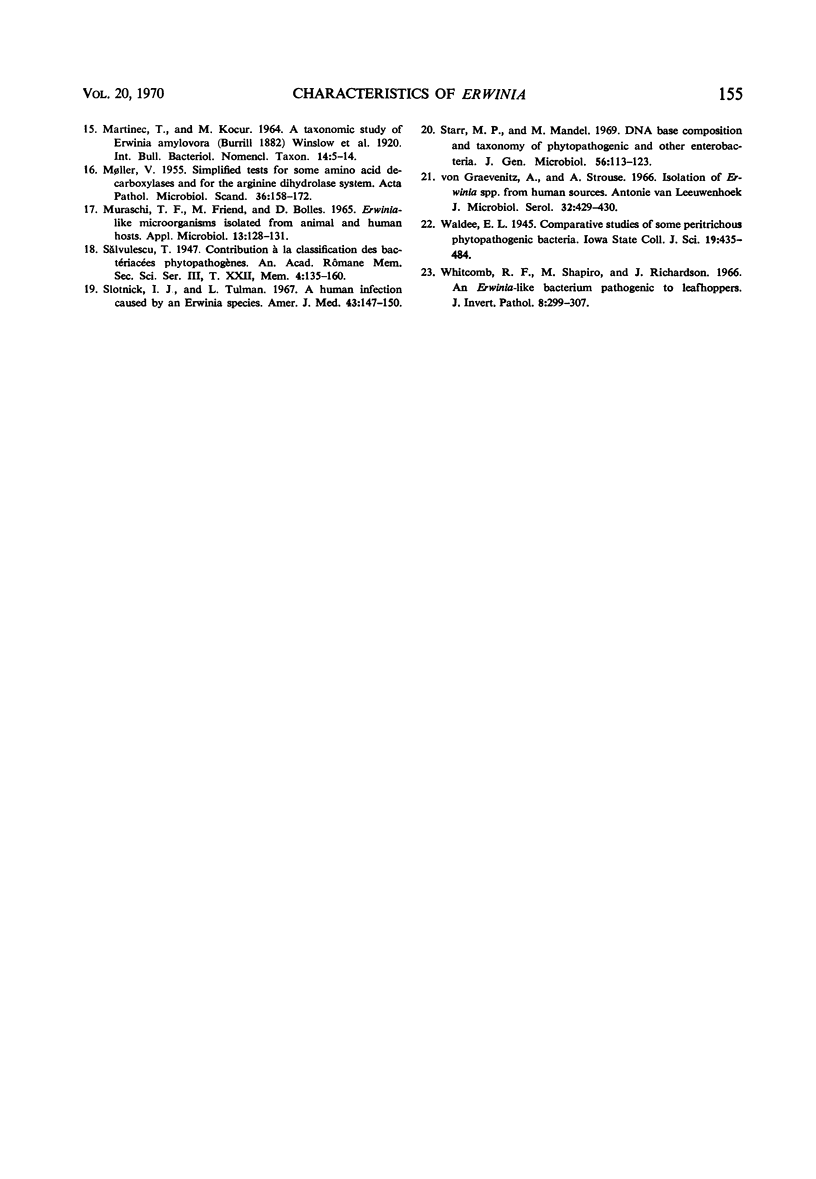
Selected References
These references are in PubMed. This may not be the complete list of references from this article.
- Bauer A. W., Kirby W. M., Sherris J. C., Turck M. Antibiotic susceptibility testing by a standardized single disk method. Am J Clin Pathol. 1966 Apr;45(4):493–496. [PubMed] [Google Scholar]
- De Ley J. DNA base composition of yellow Erwinia strains. Antonie Van Leeuwenhoek. 1968;34(3):257–262. doi: 10.1007/BF02046446. [DOI] [PubMed] [Google Scholar]
- Gilardi G. L. Diagnostic criteria for differentiation of pseudomonads pathogenic for man. Appl Microbiol. 1968 Oct;16(10):1497–1502. doi: 10.1128/am.16.10.1497-1502.1968. [DOI] [PMC free article] [PubMed] [Google Scholar]
- Graham D. C., Hodgkiss W. Identity of gram negative, yellow pigmented, fermentative bacteria isolated from plants and animals. J Appl Bacteriol. 1967 Apr;30(1):175–189. doi: 10.1111/j.1365-2672.1967.tb00287.x. [DOI] [PubMed] [Google Scholar]
- Lockhart W. R., Koenig K. Use of secondary data in numerical taxonomy of the genus Erwinia. J Bacteriol. 1965 Dec;90(6):1638–1644. doi: 10.1128/jb.90.6.1638-1644.1965. [DOI] [PMC free article] [PubMed] [Google Scholar]
- MURASCHI T. F., FRIEND M., BOLLES D. ERWINIA-LIKE MICROORGANISMS ISOLATED FROM ANIMAL AND HUMAN HOSTS. Appl Microbiol. 1965 Mar;13:128–131. doi: 10.1128/am.13.2.128-131.1965. [DOI] [PMC free article] [PubMed] [Google Scholar]
- MØLLER V. Simplified tests for some amino acid decarboxylases and for the arginine dihydrolase system. Acta Pathol Microbiol Scand. 1955;36(2):158–172. doi: 10.1111/j.1699-0463.1955.tb04583.x. [DOI] [PubMed] [Google Scholar]
- Slotnick I. J., Tulman L. A human infection caused by an Erwinia species. Am J Med. 1967 Jul;43(1):147–150. doi: 10.1016/0002-9343(67)90157-x. [DOI] [PubMed] [Google Scholar]
- Starr M. P., Mandel M. DNA base composition and taxonomy of phyopathogenic and other enterobacteria. J Gen Microbiol. 1969 Apr;56(1):113–123. doi: 10.1099/00221287-56-1-113. [DOI] [PubMed] [Google Scholar]
- Von Graevenitz A., Strouse A. Isolation of Erwinia spp. from human sources. Antonie Van Leeuwenhoek. 1966;32(4):429–430. doi: 10.1007/BF02097494. [DOI] [PubMed] [Google Scholar]


